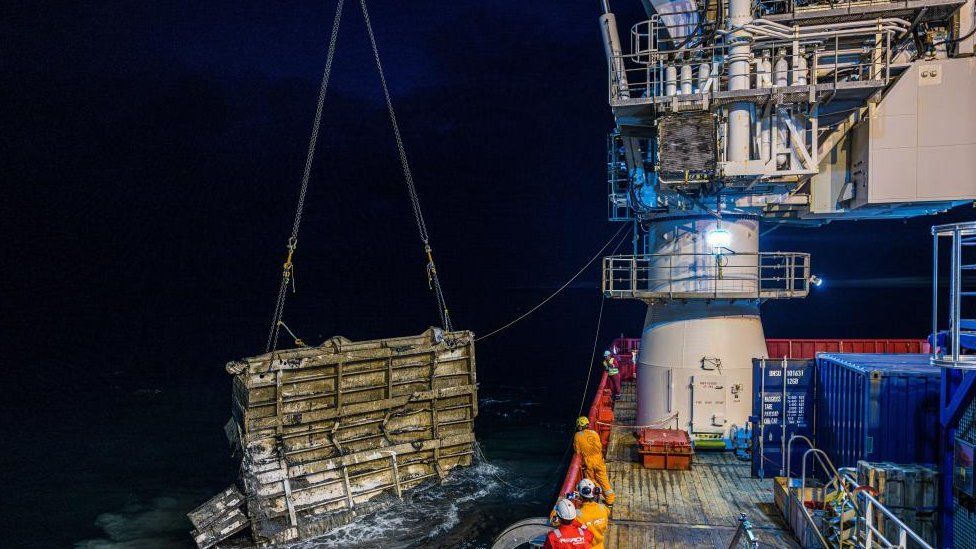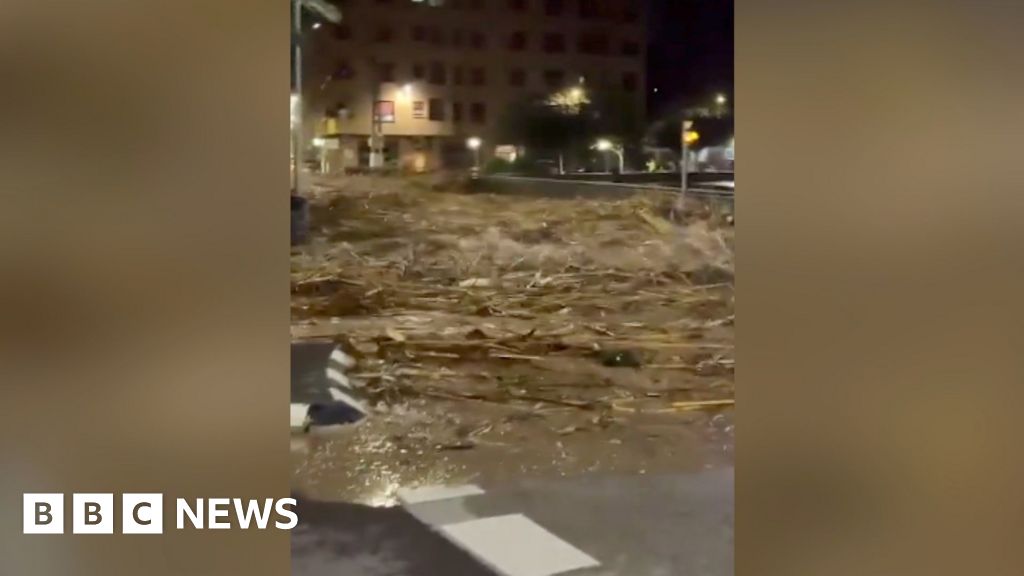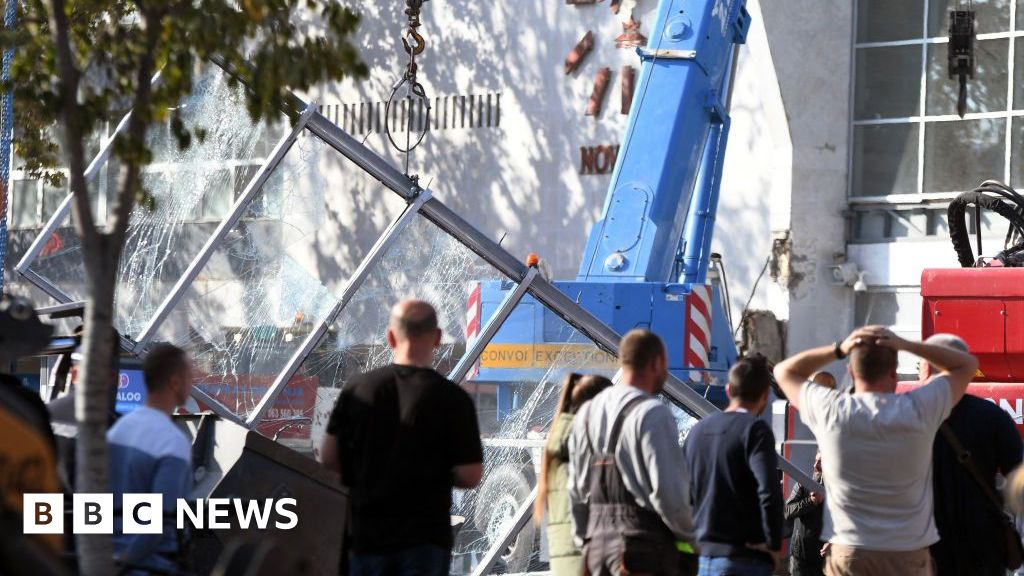ARTICLE AD BOX
 Image source, Magnus Lejhall/TT/EPA-EFE/REX/Shutterstock
Image source, Magnus Lejhall/TT/EPA-EFE/REX/Shutterstock
The 12-tonne loading ramp was retrieved from the seabed after hours of dredging work by a dive robots
A loading ramp from the MS Estonia which sank in 1994 has been recovered from the seabed and taken to port for investigation.
The ferry sank during a storm with the loss of 852 lives and an inquiry found that the ship's bow door locks had failed, allowing water to gush in.
But a TV documentary later revealed a lengthy hole in the ship's hull, prompting a new investigation.
Survivors hope it will provide a clear explanation of what went wrong.
The sinking of the Estonia, en route from Tallinn to Stockholm, was the biggest peacetime disaster involving a European passenger ship since the Titanic went down in 1912.
For almost six days Estonian, Swedish and Finnish investigators have worked close to the wreckage site in the Baltic Sea, using an underwater vehicle to examine the car deck, the hull and other areas of the ship.
Dive robots had dredged the seabed around the 12-tonne vehicle ramp for hours on Monday, investigators said.
Then in the early hours of Tuesday morning it was lifted to the surface on to the deck of the research ship, Viking Reach, which headed to the Estonian port of Paldiski.
Märt Ots of Estonia's Safety Investigation Bureau described the operation as a "very difficult moment emotionally". He told Estonia's ERR public broadcaster that he hoped the inquiry would provide answers and finally give people some closure on the disaster.
Two of the 137 survivors from the sinking of the Estonia were on board the ship - Ants Madar from Estonia and Swedish survivor Urban Lambertsson from Sweden.
Mr Lambertsson survived by clambering aboard a life raft during gale-force winds and high waves.
Failure of the bow visor, which opened upwards, was blamed by the original joint accident commission in 1997, and the visor was recovered at the time. But the vehicle loading ramp remained attached to the ship on the seabed.
The official report said the bow visor had become loose in heavy seas, resting on top of the ramp and pulling it open. Sea water flooded on to the car deck, causing the MS Estonia to list and eventually sink.
Relatives and survivors were never satisfied with the explanation and then a 2020 TV crew released video showing a hole 40m in length in the ship's hull.
In an initial assessment of the revelations in January, investigators ruled out an explosion or a collision with any other vessel and believe the hole may have been caused by rocks on the seabed.
Mr Ots said last week that it was without doubt that questions had arisen about why the hole had appeared and they would all be checked out.
Previous trips to the wreck showed a small gap between the bow loading ramp and the rest of the ship.
But in recent years the ramp became detached from the ship and it was retrieved by dive robots beside the hull at a depth of about 80m (260ft). That had left the ship's vehicle deck completely open for the dive robots to examine.
Investigators said a dive robot had inspected the ramp's control panel as well as the car deck. The area around the damaged hull on the starboard side was also examined from inside the ship as well as out and a steel sample has been brought back to port.
The ferry was sailing from Estonia to Sweden on 28 September 1994 when it sank in the Baltic Sea

 1 year ago
98
1 year ago
98








 English (US)
English (US)